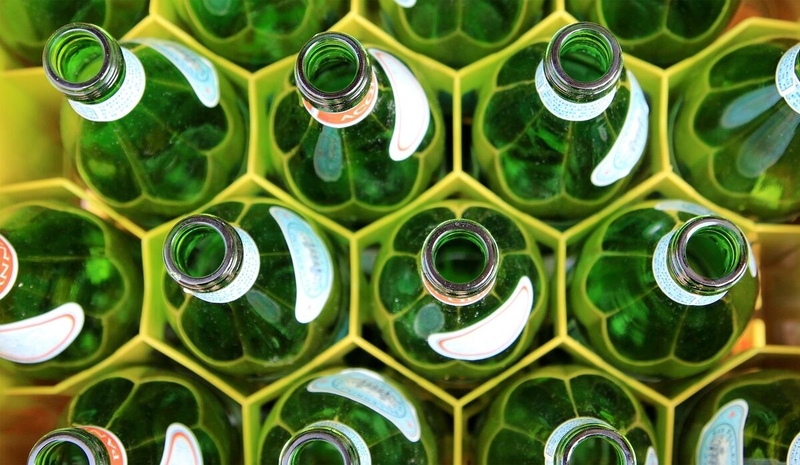Design Sustainable Products
Environmental Defense Fund
Approaching product design from a sustainability perspective is essential to reduce your company’s carbon footprint, conserve resources, and create a circular economy.

Prioritizing product design with sustainability in mind can help your company reduce its carbon footprint. A product’s carbon footprint refers to the amount of carbon emissions generated during its entire life cycle, from raw material extraction to disposal. By designing products with a lower carbon footprint, you can significantly reduce your company’s impact on the environment.
Sustainable design promotes a circular economy and conserves natural resources. Many products that are designed today use non-renewable resources, which are finite. By using renewable materials, designing for durability and reparability, reducing waste, and considering your product’s end-of-life, your company can significantly reduce its carbon footprint.
Conduct a Life Cycle Assessment
A Life Cycle Assessment (LCA) can help you identify the stages in your product’s life cycle that contribute the most to carbon emissions. An LCA involves a comprehensive analysis of the environmental impacts of a product.1 The results of an LCA can inform sustainable design decisions that reduce the carbon footprint of a product.
An LCA typically consists of four phases: goal and scope definition, inventory analysis, impact assessment, and interpretation.
- In the goal and scope definition phase, the purpose of the assessment is established, and the boundaries of the product’s life cycle are defined.
- The inventory analysis phase involves collecting data on the inputs and outputs of the product’s life cycle, including raw material extraction, transportation, manufacturing, distribution, use, and end-of-life disposal.
- In the impact assessment phase, the data collected in the inventory analysis is evaluated to determine the product’s environmental impact.
- Finally, in the interpretation phase, the results of the LCA are analyzed, and recommendations for improvement are made.
LCA planning during the early development stages of product design can help you identify areas that need improvement and make changes before the product is fully developed. For example, if your product has extensive energy requirements, then you could look at alternative manufacturing processes or materials that would reduce energy costs.
Design for Durability and Sustainability
Products that are designed to last longer and be easily repaired or upgraded can reduce the need for new products and extend the lifespan of existing ones. This significantly reduces your company’s environmental impact and can improve customer experience. For example, you can design your product for modularity, allowing users to more easily repair or replace parts as they wear out.
You can also reduce the environmental impact of your company’s products by using more durable and sustainable materials. Improving your product’s durability can increase its longevity, significantly reducing your company’s environmental footprint. You can also reduce your company’s environmental footprint by designing products with low-impact materials in mind. Low-impact materials can include:
- Recycled materials: Incorporating recycled materials into product design can help reduce waste and conserve resources. Companies can use materials such as recycled plastic, fabric, or metal.
Case Study
Unilever
Unilever’s Home Care division’s groundbreaking ‘Clean Future’ program aims to eliminate fossil fuels from cleaning and laundry products by 2030, shifting away from fossil-fuel-derived carbon (such as petrochemicals) to renewable or recycled carbon (such as carbon from recycled plastics).2
- Renewable materials: Renewable materials such as bamboo, cork, and bioplastics can be used as alternatives to traditional materials that are not renewable, such as fossil fuel-based plastics.
- Responsibly sourced materials: Companies can work with their suppliers and third-party certifiers such as the Forest Stewardship Council (FSC) or the Global Organic Textile Standard (GOTS) to source more sustainable raw materials.
- Low-impact materials: Choosing materials with a lower environmental impact, such as low-emission adhesives or water-based coatings, can help reduce the carbon footprint of products when compared to traditional alternatives.
- Locally sourced materials: Sourcing materials locally can reduce transportation emissions and support local economies.
Consider Product End-of-Life
You should also consider your product’s end-of-life during the design process. Some guiding principles include:
- Design products that can be disassembled easily, allowing for the recovery and reuse of materials.
- Provide information to customers on how to recycle or dispose of a product at the end of its life.
- Offer take-back programs where customers can return their used products for recycling or refurbishment. Companies like Apple, Best Buy, and Dell3 offer these programs to help reduce the amount of electronic waste that ends up in landfills.
- Use compostable materials to reduce waste.